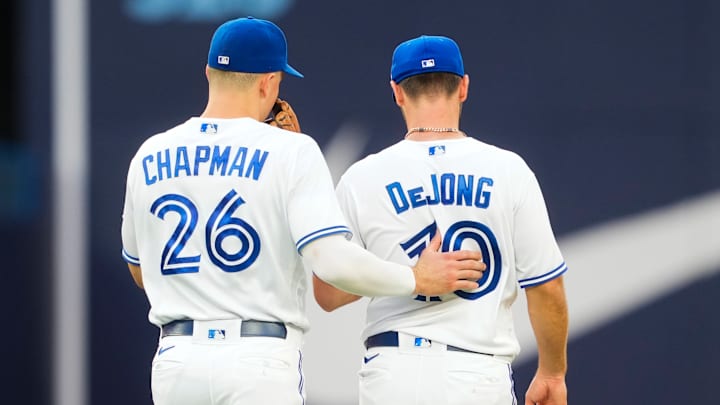Heading into the August 1st trade deadline, the Blue Jays seemed all but certain to add a difference maker into their lineup, but to the surprise of most, the front office was relatively quiet. They did make three separate moves with the St. Louis Cardinals to acquire relievers Jordan Hicks and Génesis Cabrera, as well as infielder Paul DeJong, but Hicks is the only one of these three who cost anything substantial, and none of them are the impact bat that it appeared the team would go after. Former Blue Jay, Teoscar Hernández, had his name thrown around a lot as a potential rental piece, but in the end, the Jays would elect to stay put and try to win with the players they already have. So what does this approach say about the team's plan, and how does it affect them in the long term?
There are likely a number of reasons why Atkins and Co. chose this deadline approach, but two stand out in particular. The first is that the front office feels as though they can win with the team they have right now. The Blue Jays have obviously been extremely frustrating to this point in the season, but the reality is that they've still been a competitive team. Despite many of the team's core players underperforming to this point, they're very much in the hunt, and should hopefully get better as the team gets healthier down the stretch. This isn't to say they didn't need to add help, but it may be what the front office was thinking. The other likely reason is the one that ties into the long-term effects of their approach, being that they didn't want to give up too many prospects. As we've seen in the past, the asking price for a legit difference-maker at the deadline likely would have been huge, so it's entirely possible that the Blue Jays just didn't feel comfortable giving up top prospects. This makes even more sense when you look at this in the long term.
With impact starters like Matt Chapman, Whit Merrifield, Brandon Belt, and Kevin Kiermaier all on expiring contracts, the Blue Jays need to prepare for the future, and their unwillingness to deal top prospects reflects that. For Chapman and Merrifield in particular, their potential absence could leave a massive hole in the infield, but with four of their top eight prospects per MLB Pipeline being infielders, including Orelvis Martinez and Addison Barger they're seemingly preparing for one of those guys to fill a role in the majors. What this all says more than anything is that the team is focused on being competitive long-term and not narrowing their window by dealing valuable assets for rental players.
It could be argued whether the Blue Jays' decision not to make a splash at the deadline was the right move since for the short-term, it certainly limits their ceiling in 2023, but in the long-term, this approach may pay off. It seems clear that the front office is committed to winning with the core of guys they already have, but also recognizes that they can't keep everyone. If anything, their failure to acquire an impact bat seems to signal that they're preparing for the departure of some key pieces in the coming years, and they want to stay stocked up on talent for when that happens.
